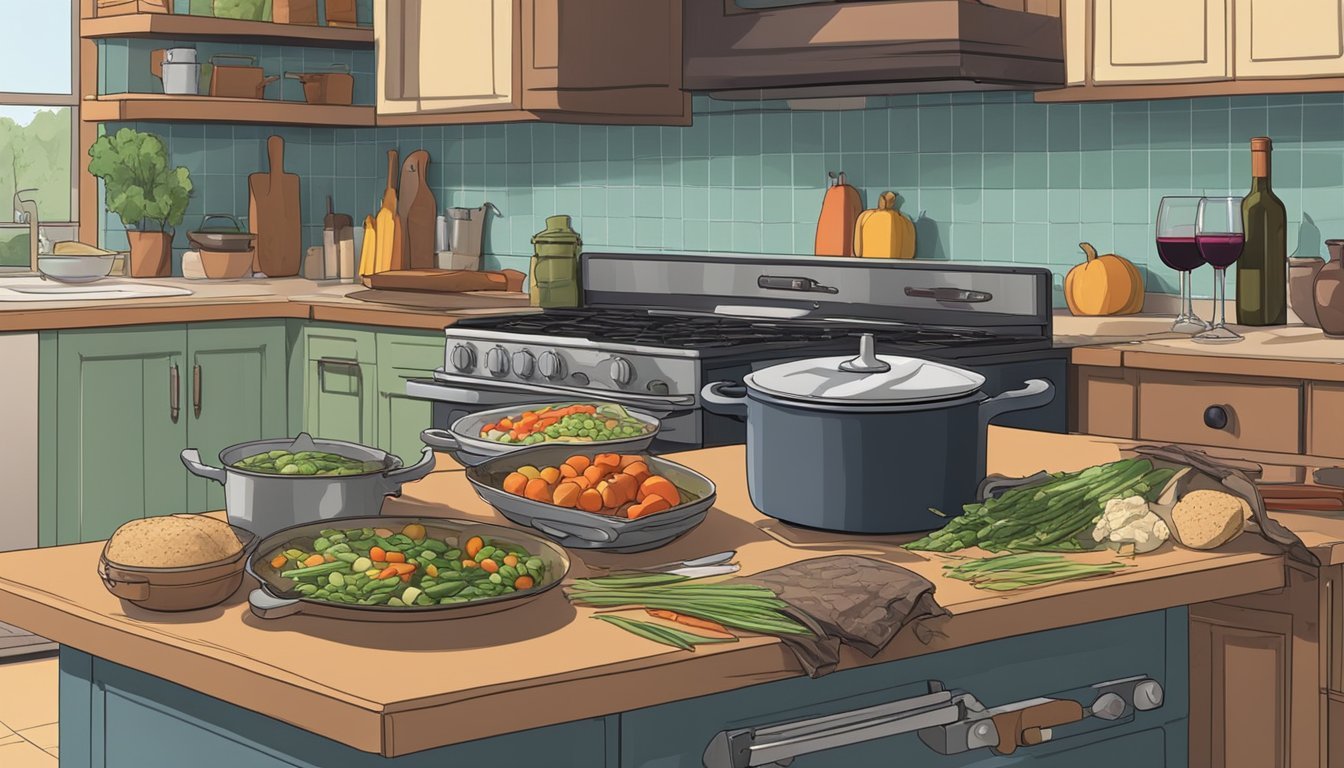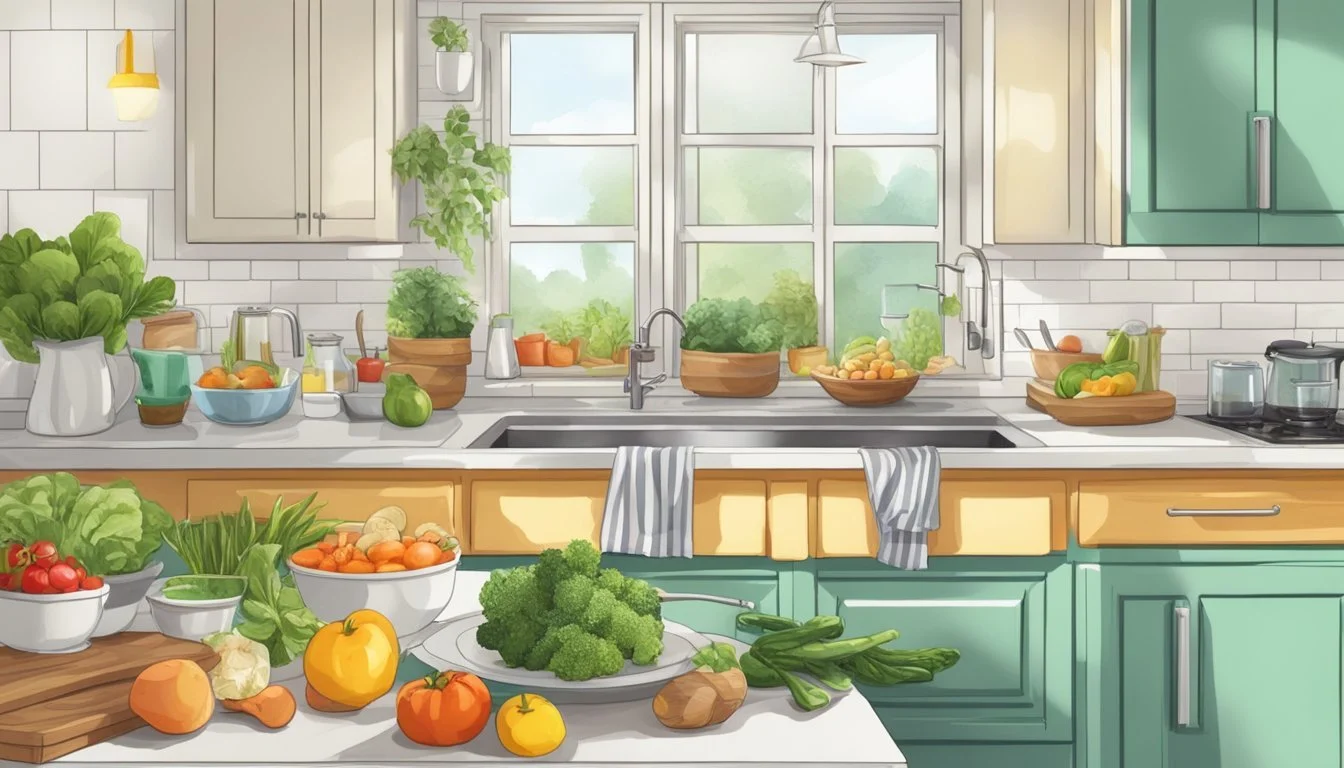How to Cook When You're Going Through a Divorce
Simple and Nourishing Recipes
Going through a divorce can be an emotionally tumultuous experience, often bringing about a cascade of feelings ranging from relief to anger. During this challenging time, it is common for individuals to seek aspects of their life they can control to provide a sense of stability. Cooking becomes a valuable outlet for many, offering not only a means to nourish oneself but also a therapeutic activity that can help to manage emotions. It brings routine and a sense of normalcy to daily life when other areas may feel uncertain.
The act of preparing meals serves as more than just a basic requirement; it can also be a form of self-support. Cooking allows individuals to focus on their well-being by choosing wholesome ingredients that cater to their physical health, while the act of cooking can provide mental respite. Learning to cook for one after being accustomed to cooking for two or more can be part of the adjustment process. It is an opportunity to rediscover personal culinary preferences and experiment with new recipes.
Navigating the kitchen during a divorce requires adapting to changes not just in the living situation, but in the emotional landscape as well. Simple, nutritious recipes can lessen the burden of meal planning and preparation during times of stress. On days when energy is low, having a repertoire of quick and easy dishes can be particularly beneficial. As individuals work through the stages of their divorce, the kitchen can transform into a place of healing and personal growth.
Understanding Divorce and Emotions
Divorce brings a profound impact on emotions, intertwining feelings of loss, stress, and the multi-staged process of grief. Individuals may encounter a wide range of emotional responses that affect their day-to-day functioning, including their meal preparation and eating habits.
Navigating Emotional Turbulence
During a divorce, individuals often experience heightened emotions. Stress can manifest in both physical and psychological ways, affecting one's ability to perform daily tasks such as cooking. It's important to recognize that feelings like anger and sadness are common reactions. One might feel the effect of emotions on their appetite and concentration, which can in turn impact their cooking routines and nutritional intake.
Stages of Grief in Divorce
Divorce can trigger a grief process, similar to other types of loss. The following summarizes the commonly accepted stages of grief in divorce.
Denial: Failing to believe the reality of divorce, which may include neglecting personal care and nutrition.
Anger: Feeling resentment that can interfere with one’s daily activities, including cooking.
Bargaining: Trying to negotiate or make deals to possibly reverse the course of the divorce.
Depression: Deep sadness might reduce the motivation to prepare food or eat properly.
Acceptance: Eventually, there is an acknowledgment of the situation, potentially restoring a sense of normalcy in cooking habits.
It's crucial for those going through a divorce to understand these emotional stages as they relate to all aspects of life, including meal preparation and cooking. By acknowledging these feelings and their impact, one can seek appropriate support and strategies to maintain a healthy lifestyle even amidst emotional turmoil.
Developing a Support System
When navigating the emotional turmoil of a divorce, establishing a reliable support system is indispensable. This network of trusted individuals and professionals provides both practical and emotional assistance.
Leveraging Family and Friends
Family and friends compose the foundational layer of any support system. They provide comfort, a listening ear, and day-to-day assistance that can be crucial during the transition of a divorce.
Trusted friends can help with tasks like meal planning or sharing recipes that can simplify cooking routines.
Family members might step in to share family recipes or join in cooking to keep traditions alive and create a sense of normalcy.
Finding Professional Support
Professionals complement the emotional backing from loved ones with structured guidance and coping strategies.
A therapist, specializing in divorce, can offer tailored advice on managing stress and keeping a balanced life, including meal preparation.
Professional Support Role in Cooking During Divorce Divorce Coach Provides strategies to manage time and stress related to meal planning. Therapist Helps navigate emotional blocks that can interfere with the desire to cook.
Support groups can be a place to exchange practical cooking tips and recipes that cater to individuals adjusting to cooking for one or fewer people.
Coping Mechanisms for Stress Relief
During a divorce, individuals seek various coping mechanisms for stress relief. It's important that these mechanisms are healthy, focusing on physical well-being, mental health practices, and engaging in enjoyable activities.
Exercise and Physical Activity
Engaging in regular exercise is a proven method to alleviate stress. Physical activities, such as yoga or a visit to the gym, release endorphins that act as natural mood lifters. Individuals can incorporate:
Daily walks or jogs
Group fitness classes, fostering social support
Yoga sessions, combining physical exercise with mindfulness
These activities help to direct negative energy into positive outcomes, promoting overall well-being.
Mental Health Practices
Paying attention to mental health is crucial during stressful life events. Methods like therapy can provide a safe space for expressing feelings and developing coping strategies. Self-care tips for mental health include:
Practicing mindfulness meditation
Utilizing techniques like progressive muscle relaxation
Incorporating deep breathing exercises to reduce anxiety
Such practices encourage individuals to confront stressors with a clearer, calmer state of mind.
Embracing Hobbies and Interests
Dedicating time to hobbies and interests is a positive way to handle stress. Activities like cooking, which require focus and creativity, can be particularly therapeutic. They allow for:
Expressing creativity, transforming it into tangible results
Socializing through cooking for others or joining cooking classes
Nutritional self-care, ensuring proper diet during stressful times
Fostering these interests helps individuals find joy and fulfillment, serving as a distraction from stress.
Managing Logistics
When individuals face the process of divorce, they often confront the dual demands of reorganizing their personal lives and their living spaces. Addressing financial concerns, developing co-parenting strategies, and establishing new personal spaces become essential steps in moving forward confidently.
Handling Finances During Divorce
Budgeting: It is pivotal for a person going through a divorce to reassess their budget. Expenses that were once shared, such as utility bills and groceries, will now be handled individually. They should:
List all income sources: This may include salaries, child support, or alimony.
Track expenses: Categorize fixed expenses (rent, utilities) and variable expenses (food, clothing).
Asset Division: Determining who retains certain assets, such as kitchen appliances or furniture, can impact the ability to cook and live comfortably. Decisions should be documented and, where appropriate, incorporated into the divorce settlement.
Co-Parenting Strategies
Meal Planning: If children are involved, parents need to establish a consistent meal schedule that works in both households. This can include:
Agreeing on balanced diets for their children.
Sharing responsibilities for meal prep on designated days.
Communication: They should maintain open dialogues about their children’s needs and preferences, and updates or changes in schedules should be exchanged promptly to ensure a smooth co-parenting operation.
Moving On and Creating New Spaces
Kitchen Setup: Creating a new kitchen space requires attention to both practical needs and personal tastes. They may:
Select appliances and tools: necessary for their cooking habits.
Arrange the space: in a way that inspires comfort and ease of use.
New Beginnings: Viewing the task of setting up a new kitchen can be an opportunity for individuals to express themselves and start afresh, incorporating cooking styles that they enjoy and perhaps did not explore previously.
Finding Joy and Opportunity
During a divorce, cooking can transform from a mundane task to a significant step in recovery and moving on. Embracing the kitchen provides unique opportunities for personal growth and joy.
Discovering Personal Taste: After a divorce, one's preferences might change or become more apparent. Cooking allows individuals to explore flavors and cuisines they enjoy, which can be both empowering and delightful.
Cooking as Therapy: The act of cooking can be therapeutic. Engaging in the rhythmic activities of chopping and stirring can provide a meditative escape, offering mental clarity and reducing stress.
Benefits of Cooking Description Creative Outlet Allows expressing creativity through recipe development and plating. Skill Advancement Cooking more frequently improves culinary skills and confidence in the kitchen. Social Connections Sharing meals connects with others, fostering new relationships or strengthening existing ones.
Health and Self-Care: Focusing on nutrition is both an act of self-care and an opportunity to boost physical health, a critical component of rebuilding life post-divorce.
New Traditions: Divorce often disrupts routines. Cooking empowers individuals to establish new traditions and rituals, providing both comfort and a sense of continuity in their evolving lifestyle.
Recognizing the kitchen as a place of opportunity rather than just a necessity can lead to significant personal gains. It is a chance to nurture oneself, to seek out comfort, and, in time, to find joy in the solo journey of self-discovery and independence.
Understanding Legal Aspects
When going through a divorce, navigating the legal complexities is crucial. A clear understanding of the legal landscape helps in making informed decisions.
Choosing the Right Lawyer
Selecting a competent lawyer is one of the most critical steps in handling the legal aspects of a divorce. The right lawyer will not only be knowledgeable in state-specific divorce laws but should also align with the client's personal values and divorce goals. Here's a concise checklist for choosing legal representation:
Look for specialization in family or divorce law.
Assess the lawyer's experience with similar cases.
Prioritize clear communication and accessibility.
Consider their approach to negotiation versus litigation.
Review testimonials or ask for references.
The Process of Collaborative Divorce
Collaborative divorce is an alternative legal approach focused on negotiation and problem-solving rather than contentious court battles. In a collaborative divorce, both parties commit to:
Voluntary and open information sharing.
A mutual effort to reach a mutual agreement.
The engagement of neutral experts if needed (e.g., financial advisors, child custody specialists).
The collaborative process aims to reach solutions that consider the needs of all parties, especially any children involved, with an emphasis on respect and transparency.
Building a New Beginning
When one is navigating the tumultuous waters of divorce, cooking can serve as a form of recuperation and an opportunity for a new start. They may rediscover their personal preferences and introduce new traditions that promote recovery and moving on.
Essentials for a Fresh Start in the Kitchen:
Self-discovery: It's time to think about what they enjoy eating. Divorce offers an unexpected opportunity to rediscover personal tastes and experiment with recipes that perhaps weren't explored during marriage.
Routine Creation: Establishing a cooking routine is essential. Whether it's trying out a new recipe weekly or meal prepping for convenience, routines can offer a sense of control and normalcy.
Tips to Enhance the Cooking Experience:
Meal Planning: They should consider planning their meals to include nutrient-rich foods that aid in physical well-being, which is crucial during stress.
Cooking as Therapy: Engaging in the process of preparing a meal can be therapeutic. The act of chopping, sautéing, or baking requires focus and can be a meditative practice, helping to clear the mind of negativity.
Social Connection: They may use cooking as a means to connect with friends or family, hosting small dinners or potlucks. This supports emotional recovery by reinforcing social ties.
Setting the Environment:
Inspiring Space: Creating an inspiring cooking space can significantly affect one’s mood. They should consider decluttering and organizing the kitchen to make it a welcoming and functional area.
New Utensils: A new beginning might be the right time to invest in some new kitchen gadgets or utensils, which can add excitement to the cooking process.
Embracing Change:
Experimentation: Now is the ideal time to experiment with new cuisines and cooking techniques. They may find joy in exploring cultures through their culinary delights.
Mindful Eating: They should practice mindful eating, taking the time to savor each bite and appreciate the food, which can help in forming a healthy relationship with meals.
Cooking during a time of transition is more than just a necessity; it's a step towards healing and establishing a new independent life.








